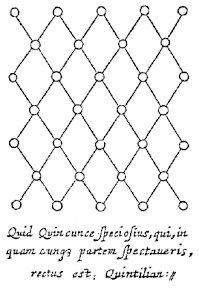Thomas Browne's study of ancient Egypt was multi-faceted; as a doctor he took an interest in its medicine, as a devout Christian he knew that the Biblical books of Genesis and Exodus are set in ancient Egypt; and as a scholar of comparative religion he was familiar with the names and attributes of the Egyptian gods; but above else its from his adherence to Hermetic philosophy that Browne's life-long interest in the Land of the Pharaoh's was sustained. For, in common with almost all alchemists and hermetic philosophers of the 16th and 17th century, Browne believed ancient Egypt to be the birthplace of alchemy and where long lost transmutations of Nature were once performed. And indeed the early civilization skills necessary in baking, brewing and metal-work, as well as cosmetics and perfumery, were all once close guarded secrets. Ancient Egypt was also believed by hermetic philosopher and alchemist alike to be the home of the mythic sage Hermes Trismegistus, inventor of number and hieroglyph and the founding father of all wisdom subsequently passed down in a golden chain of prophets and mystics culminating in Christ.
Just as fans of the pop singer Elvis Presley (1935-77) often collect all kinds of American memorabilia, so too in the 16th and 17th centuries followers of Hermes Trismegistus avidly collected artefacts believed to be of Egyptian origin, and read literature which claimed to be by the Egyptian sage.
Browne's adherence to Hermetic philosophy is writ large in his spiritual testament and psychological self-portrait Religio Medici (1643), the newly-qualified physician declaring - 'The severe schooles shall never laugh me out of the philosophy of Hermes, that this visible world is but a portrait of the invisible.' [1]
Its however more with an eye towards dentistry and with characteristic humour that Browne in the consolatory epistle A Letter to a Friend informs his reader -
'The Egyptian Mummies that I have seen, have had their Mouths open, and somewhat gaping, which affordeth a good opportunity to view and observe their Teeth, wherein 'tis not easie to find any wanting or decayed: and therefore in Egypt, where one Man practised but one Operation, or the Diseases but of single Parts, it must needs be a barren Profession to confine unto that of drawing of Teeth, and little better than to have been Tooth-drawer unto King Pyrrhus, who had but two in his head'.
Browne's knowledge of Egyptian medicine was acquired through reading the Greek historian and traveller Herodotus (c. 484 – c. 425 BCE) whose Histories was the solitary source of information about ancient Egypt for centuries. [2] In Browne's day there was a well-established trade in mummia. Because the skills in Egyptian mummification appeared to preserve the human body for the afterlife in an extraordinary way, the crushed and pulverised parts of Egyptian mummies became popular remedies for all manner of disease and illness. Often mixed or contaminated with bitumen, in reality mummia was of little medicinal value. Thomas Browne for one, deplored its usage in medicine, declaiming in Urn-Burial -

In the foreword to Mysterium Coniunctionis; 'An inquiry into the separation and synthesis of psychic opposites in Alchemy', the seminal psychologist C. G. Jung informs his reader that -
'the "alchemystical" philosophers made the opposites and their union one of the chiefest objects of their work'. [7]
I've written before about how Thomas Browne's diptych Discourses Urn-Burial and The Garden of Cyrus exemplify the Nigredo and Albedo stages of the alchemical opus - of how the two Discourses are opposite each other in respective theme, imagery and truth. The dark and gloomy doubts, fears and speculative uncertainties upon Death featured in Urn-Burial are mirrored by cheerful certainties in the discernment of archetypal patterns in The Garden of Cyrus - of how the two works fulfil the template of basic mandala symbolism with their metaphysical constructs of Time (Urn-Burial) and Space (The Garden of Cyrus) and of the many polarities which they display such as - World/Cosmos, Earth/Sky, Accident/ Design, Decay/Growth, Darkness/Light, Conjecture/Discern, Mortal/Eternal and of course, Grave/Garden.
The concept of polarity (a word Browne is credited with introducing into the English language in its scientific context) is a vital construct of much esoteric schemata. The opposites and their union, as C.G. Jung noted, were a fundamental quest of Hermetic philosopher and alchemist alike. Browne’s literary diptych is, not unlike the human psyche, a complex of opposites or complexio oppositorum (complex of opposites). Unique as a literary diptych, it corresponds to the polarity of the Microcosm-Macrocosm schemata of Hermeticism in which the microcosm little world of man and his mortality, (Urn-Burial) is mirrored by the vast Macrocosm and the Eternal forms or archetypes (The Garden of Cyrus). The polarity of the alchemical maxim solve et coagula (decay and growth) also closely approximates to the diptych's respective themes, as does the diptych's imagery which progresses from darkness and unconsciousness (Urn-Burial) to Light and consciousness (Garden of Cyrus). The previously mentioned alchemical feat of palingenesis, that is, the revivification of a plant from its ashes which the Swiss alchemist Paracelsus (1493-1541) claimed to have performed, shares close semblance too. The funerary ashes of Urn-Burial burst into flower in the botanical delights of The Garden of Cyrus.
C.G. Jung stated that whenever a complex of opposites occur, a unifying symbol, capable of transcending paradox, sometimes emerges. Its far from improbable that Browne found in his study of ancient Egypt two such symbols which he subsequently embedded in his Discourses namely, the Egyptian god Osiris and the Pyramid. As the literary critic Peter Green noted, 'Mystical symbolism is woven throughout the texture of Browne's work and adds, often subconsciously, to its associative power of impact'. [8]
Osiris was one of the most important gods of Ancient Egypt. He plays a double role in Egyptian theology, as both the god of fertility and vegetation and as the embodiment of the dead and resurrected king. Osiris is utilized in Browne's proper-name symbolism in Urn-Burial as an example of how Time devours even the names of the gods themselves - 'Nimrod is lost in Orion, and Osyris in the Dogge-starre'. However, in The Garden of Cyrus the Egyptian god Osiris assumes a more important role, as the god of vegetation and growth who is assisted by his secretary, the great Hermes Trismegistus. In a short paragraph in which the game of Chess, Pyramids, Egyptian gods and astronomy coalesce in an extraordinary stream-of-consciousness association, Browne exclaims -
'In Chesse-boards and Tables we yet finde Pyramids and Squares, I wish we had their true and ancient description, farre different from ours, or the Chet mat of the Persians, and might continue some elegant remarkables, as being an invention as High as Hermes the Secretary of Osyris, figuring the whole world, the motion of the Planets, with Eclipses of Sunne and Moon'.
C.G. Jung noted how Egyptian theology influenced Christianity thus-
See also
On esoterism in 'The Garden of Cyrus'
Carl Jung and Sir Thomas Browne
Paracelsus and Sir Thomas Browne
Books consulted
* Browne: Selected Writings. ed. with an introduction and Index by Kevin Killeen Oxford 2014
* Herodotus : The Histories. Penguin 1954
* Athanasius Kircher: A Renaissance Man the Quest for Lost Knowledge
- ed. J. Godwin Thames and Hudson 1979
* C.G. Jung Collected Works Vol. 14 Mysterium Coniunctionis
* 'Egypt' BBC DVD 2005
* 1711 Sales Auction Catalogue of T. Browne and E. Browne's libraries
* Author's 1658 edition of Pseudodoxia Epidemica with Urn-Burial and The Garden of Cyrus
Notes
[1] Religio Medici Part 1:12
[2] Book 2 of Herodotus The Histories includes his observations on Egypt.
[3] 'In his learned Pyramidographia' Browne marg. of 1658 3rd or 4th edition of P. E. Bk 2 chapter 3
[4] R.M. Part 1:34
[5] P.E. Bk 2 ch. 3
[6] Athanasius Kircher: A Renaissance Man the Quest for Lost Knowledge J. Godwin. 1979
[7] C. W vol.14 Mysterium Coniunctionis Foreword
[8] Sir Thomas Browne Peter Green -Longmans and Green 1959
[9] C.W. Vol.9 part 1: 229
This one for M. with thanks for encouragement.
.jpg)


_blu.svg.png)














.jpg)






























